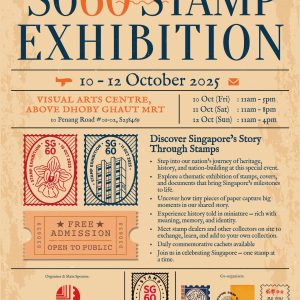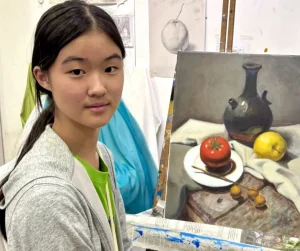
SG60 Stamp Exhibition
SG60 Stamp Exhibition Synopsis In celebration of Singapore’s 60th year
























17 October to 20 October 2019
ROLIOR PARTNERS INC. has been organizing new style exhibitions that attract people by so called chemical reaction of Japanese traditional art and outstanding artists from every corner of the world. Our theme is “Raising the standard of traditional art craft “.
Through the active fusion of completely different fields and cultures, we are challenging to expand artists’ possibilities with the aim of creating new value for the cultural development of traditional crafts.
We are very proud to present the exhibition where both a Japanese traditional craft artist, Osamu Wakui and a flower artist, Dan Takeda who is based in Singapore and are active in a number of leading luxury labels devote all their energies to their work. All the artwork at the exhibition are specially produced with their utmost technique for this special occasion, “Dream of Singapore”. We are aspiring to promote understanding and exchange of mutual culture through collaborations by artists from different fields of interest in Singapore and Japan.
In addition, we are very pleased that Yamagta Prefecture, which is a region very rich in nature in every season of the year, fully cooperated in this project. Guests will enjoy sake and snacks from Yamagata Prefecture as well as special performance by Dan Takeda at the welcoming reception on October 18. We will be more than happy if the guests experienced new perspective of Singapore expressed by Japanese traditional crafts.
Osamu Wakui, a Japanese traditional craftsman, who is considered one of the favorite artists of the Imperial Household Agency in Japan, expresses his perception of Singaporean culture through his traditional craft technique under the theme of “Dream in Singapore”. Dan Takeda, a Singapore based flower artist who has collaborated with leading luxury labels will join the “Dream of Singapore” to demonstrate his marvelous flower deigning in Wakui’s exceptional art works with advanced technique. Wakui’s works can be purchased at the venue.
There are three sections in the exhibition that are Narushima Yaki, Yakishime, and Inlaid white porcelain. Wakui’s works can be purchased at the venue.
1) Narushima Yaki
Narushima Yaki is a pottery made in Yonezawa city, Yamagata Prefecture. Yozan Uesuzgi, the father of Yonezawa domain let Seizaemon Sagara, his vassal, learn the technique of Soma Yaki (Soma ware) in 1781, which eventually acknowledged as Narushima Yaki. After more than 100 years Fujio Wakui, a father of Osamu Wakui successfully revived Narushima yaki with his outstanding technique. He had been struggling with the clay for a long time and finally succeeded in expressing a taste of quietness and simplicity in his artwork. In addition to traditional white and blue of Narushima yaki, colors changed to blue purple and red purple by glazes in a kiln is one of a kind and can cannot be found elsewhere.
2) Yakishime (using no glazes, but strong flame only)
A special chemical reaction of the soil produced in Nagai city, fire, and soot, reveals a golden pattern on the surface of pottery in rare cases. Yakishime is characterized by not using any pigments or glazes, but with strong flame. The color changing to gold in kiln appears only in this environment in Naga city, and is not seen elsewhere.
3) Inlaid white porcelain
Although there are many works of top painting, which pigments are burned at lower temperatures, there is no other white porcelain work made by overlapping the coloured clay to about 20 layers in one unit. Because of its advanced and unparalleled technique, Wakui’s works were purchased by the Imperial Household Agency in Japan at the traditional draft exhibition. Only five works out of one thousand were selected by the Emperor himself. Those distinctive works are presented to the state quest to express the utmost hospitality of the Japanese.
Venue:Visual Arts Centre Singapore
Organizer:ROLIOR PARTNERS INC.
Collaboration:Yamagata Prefecture
Exhibition Date & Time
October 17, 2019: Opening of Dream of Singapore 2019 (11:00 ~ 21:00)
October 18, 2019: Welcoming Reception (Exhibition: 11:00 ~ 18:00 / Reception: 19:00 ~ 22:00) *By invitation only, for those who are no invited, $50 entrance fee will be applied for Welcoming Reception
October 19, 2019: Exhibition (11:00 ~ 21:00)
October 20, 2019: Exhibition (11:00 ~ 16:00)
Dan Takeda
Born in Kanagawa Prefecture in 1981. CEO of DAN TAKEDA FLOWER & DESIGN.
In 2008 Dan Takeda moved to Singapore alone and soon started working as a flower artist. His unique sensibility and elegant style have made him popular, and he has worked as a flower designing artist for leading worldwide luxury labels such as Louis Vuitton, HERMES, Cartier, and so on. Currently he has expanded his work field in Japan and abroad. He has collaborated not only with labels overseas, but with Hiroko Koshino, one of the most prominent Japanese fashion designers. He has also donated his works to top department stores in Singapore.
Osamu Wakui
Born in Yamagata Prefecture in 1957. A regular member of Japan Art Crafts Group. A Chairperson of Yamagata Art and Crafts Group.
Osamu Wakui is a technical successor to Fujio Wakui (deceased, awarded intangible cultural assets) who revived Nagai yaki, a traditional potter of Nagai city, Yamagata Prefecture and Narushima Yaki, which is assumed a rare art craft. He is a traditional craftsman whose specialty is inlaid white porcelain, which is considered extremely difficult among a number of art crafts. His works have been accepted for Japan Traditional Art Crafts Exhibition, Traditional Art Crafts Exhibition for New Work, and etc., and the Imperial Household Agency in Japan is favor of his works and has bought some of them. With his principles that learning from tradition, expressing in the real world, and succeeding to the future, he is challenging to enhance artistic value of modern art crafts in and out of Japan.

Embark on a captivating journey into the vibrant world of digital art! Our Foundation in Digital Art workshop invites budding creatives aged nine and above to unleash their imagination and hone their artistic skills in a dynamic, supportive environment. From mastering basic digital tools to crafting mesmerizing digital masterpieces, children will explore a spectrum of techniques guided by seasoned mentors. Through hands-on activities and interactive sessions, participants will discover the endless possibilities of digital expression while fostering creativity and critical thinking. Join us for an exhilarating adventure where young artists transform ideas into stunning visual realities, igniting a passion for digital art
In the Batik Introduction Handkerchief Painting workshop, participants will learn the traditional art of batik, a wax-resist dyeing technique originating from Indonesia. The workshop begins with a brief history and overview of batik, highlighting its cultural significance and various techniques. Participants will then observe a demonstration of applying wax with tjanting tools and dyeing the fabric. Following the demonstration, each participant will design and create their own batik handkerchief, applying wax to create patterns and then dyeing their fabric. The workshop concludes with a group discussion, allowing participants to share their creations and reflect on their learning experience.